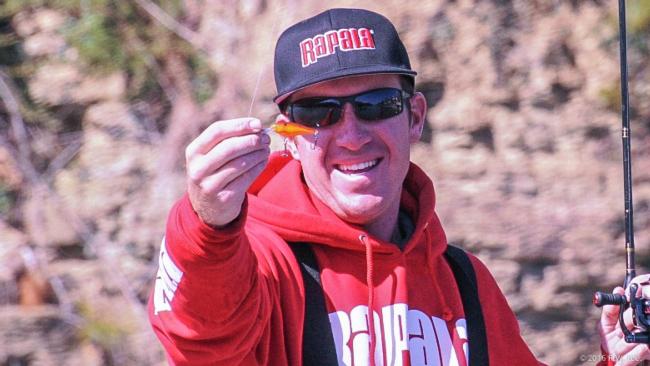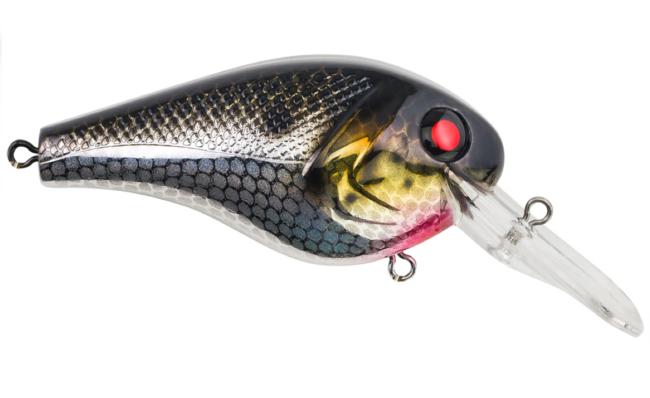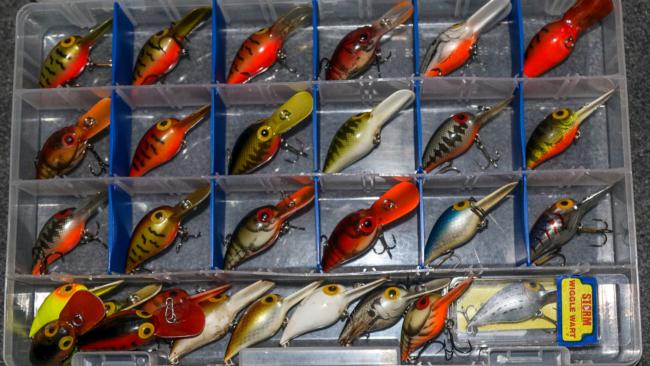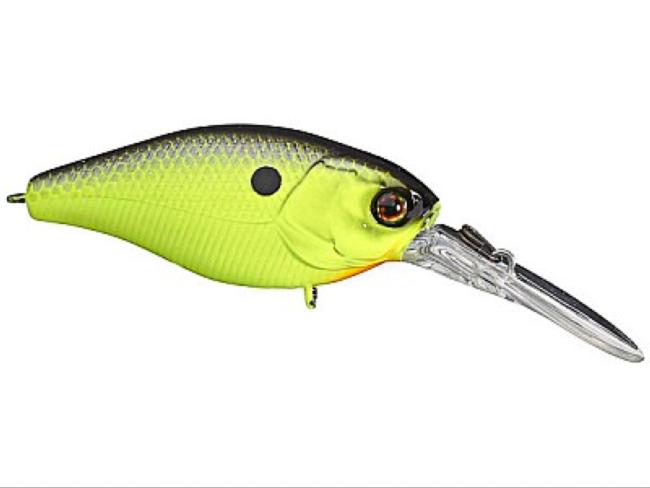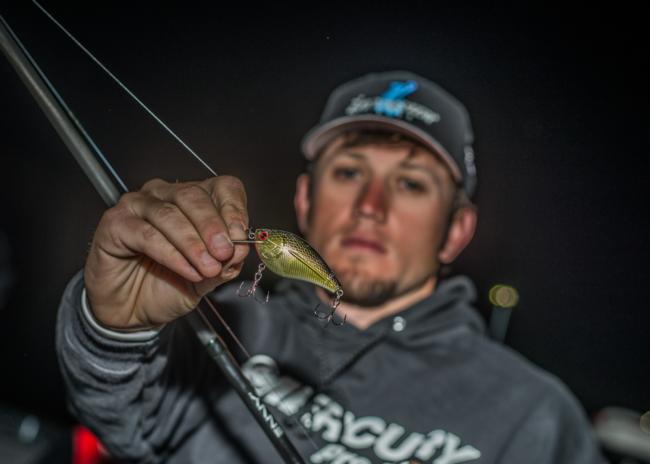5 Pros’ Favorite Prespawn Crankbaits
Advice on crankbait selection and tactics for making the most of the spring season
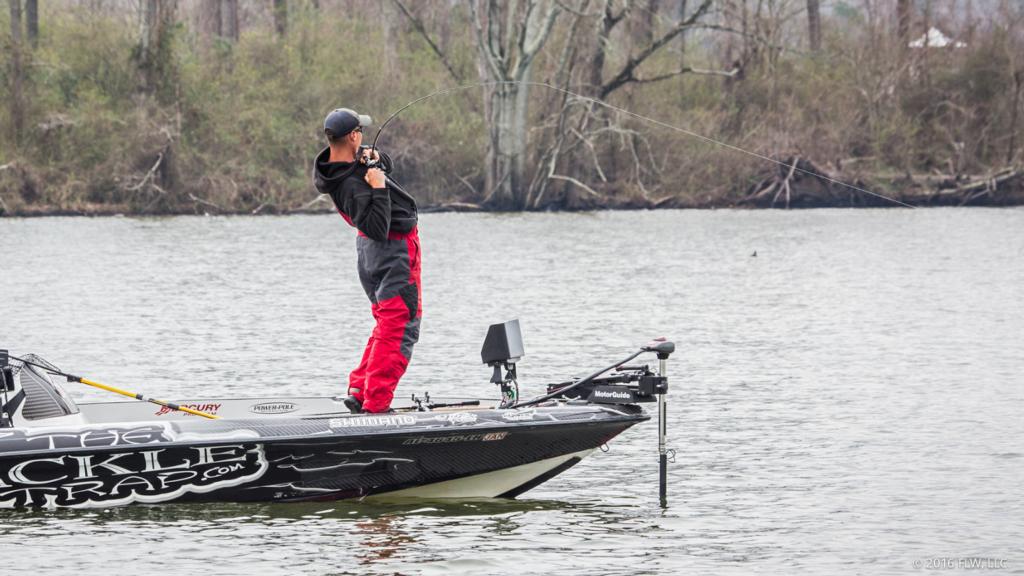
The prespawn is a prime time to shake off the winter blues. When the weather heats up, so does the fishing as bass move from their winter holes and transition to shallower, warmer water. It’s also a great time to catch fat bass that are heavily feeding up for the spawn.
Since bass are chasing down baitfish and crawfish, throwing crankbaits is a great way to capitalize on the aggressive behavior and cover water. Yet some crankbaits are better than others this time of year.
Walmart FLW Tour pros Jacob Wheeler, David Fritts, Joe Holland, Alex Davis and Stetson Blaylock offer their suggestions for prespawn crankbaits as well as advice on how to put them to work.
1. Rapala Shad Rap
Jacob Wheeler’s prespawn crankbait of choice is the Rapala Shad Rap.
“It has a tight wiggle and subtle action that bass chomping on baitfish are going to eat,” he says. “I’ll switch between the No. 5 and No. 7 sizes.”
Matching the size of the forage is the main determinant between the two lure sizes, but they also dive to different depths. Wheeler whips out the No. 5 when fishing is really tough and he needs a limit. It runs 4 to 5 feet deep when thrown on 8-pound-test fluorocarbon. The larger No. 7 comes into play when he’s fishing any structure deeper than 6 feet or if he’s on a lake that consistently churns out bass larger than 3 pounds.
Water temperature dictates the structure to target. When the temperature is less than 55 degrees, Wheeler fishes deeper structure, such as bluff walls and deep points. At temperatures higher than 55 degrees, he moves to flatter structure. Channel banks with pea gravel are ideal.
“When fishing these areas, make sure to key in on any irregularities,” Wheeler adds. “Throw at any isolated cover, and try to pattern the size of rock.”
The former Forrest Wood Cup champ’s color choice is based on two factors: forage and water clarity. When they are feeding on crawfish, he likes purple olive craw in clear water and the standard crawdad pattern in dirty water.
“Crawdad is a hard color to beat. It works all over but is perfect for dirty water,” adds the Hoosier pro. “Its bright orange color makes it highly visible in the water.”
When they are feeding on shad, he reaches for live river shad in clear water and the standard shad pattern in stained water.
Finally, Wheeler opts for a medium-light spinning rod to cast the Shad Rap, which is a very light bait. Compared to a heavier casting rod, it allows for a little more distance on casts and lets the fish really load up on the bite.
2. Berkley Wild Thang
David Fritts, a widely renowned crankbait guru, says that during the prespawn he prefers a new crankbait that he recently helped design with Berkley. The Wild Thang runs about 9 to 10 feet deep, and it’s designed to hunt – or not track perfectly straight – and to have an erratic action.
Fritts’ prespawn target areas are places that he finds crawfish, and he bases bait color selection on the crawfish in that particular lake or region.
“I look for little rocky banks and corners, riprap, or anywhere the crawdads are living,” he says. “When fishing more northern lakes or the Ozarks, I’ll go with greens and blues with a little orange. As I get farther south, I’ll go with reds and browns.
“A general rule is the colder the water, the slower the retrieve speed,” adds the North Carolina pro. “You have to find out what they want. Sometimes I’ll throw it out and pump it in. A stop-and-go retrieve is also a good way to fish it. If they are real aggressive, I’ll go with a straight crank.”
Fritts suggests staying away from reels with high retrieve ratios.
“If the water is around 50 degrees, you want a 5.1:1 ratio that retrieves 21 inches per turn. When they are more aggressive, you can go with a 6.8:1 ratio that collects 31 to 35 inches per turn,” he says.
3. Storm Original Wiggle Wart
The Storm Original Wiggle Wart is Tour pro Joe Holland’s favorite in the prespawn. While the bait is still manufactured today, many anglers – including Holland – prefer Wiggle Warts made prior to when Rapala purchased Storm. These older “originals” have a cult-like following.
“It has a different sound to it than the new ones,” says Holland, of Jefferson, Maine. “The old lead ball inside gives off more of a thud sound than the hollow sharp ting the new one gives off.”
Holland acquired his Original Wiggle Wart collection over the years in a number of ways, including yard sales, thrift shops, trading baits like baseball cards and buying them online for as much as $45 apiece.
The other key to the bait’s success is its erratic action. It doesn’t track perfectly straight and can be enticed to have a darting action. Deflecting it off rocks or wood cover helps too.
“Using the tip of your rod, giving it a quick yank or just stopping it quickly can create an artificial deflection,” adds Holland. “The bait will shoot up or left a foot. The fish has to make a split-second ‘decision.’ That time a year, they eat more than they let it go, usually not thinking twice about it.”
With the right setup, a Wiggle Wart can reach depths of 12 feet, but Holland says the sweet spot is in the 3- to 8-foot-deep range.
“It needs to be making contact with the bottom. The more deflections the better,” he says.
The search for prespawn bass starts just outside the spawning grounds in transition areas – usually points – where bass are staging after coming off their winter patterns.
“Since the bass are typically a little more aggressive in the prespawn, I’ll use bright colors, such as red or chartreuse, to get more attention,” Holland says. “Also, crawfish will often have brighter colors during the bass spawn because they molt their shell right before the bass spawn.”
Holland isn’t afraid to go with a straight white Wart either.
“Like us Northern anglers, the baitfish moving from their deeper winter holes will be paler in the beginning of the year,” he jokes.
The rookie pro’s setup includes a 6.4:1 retrieve ratio reel paired with a Lew’s Custom Speed Stick “Wart Special” model.
“It’s a 7-foot, medium power with a moderate-fast taper, perfect for flicking the Original Wiggle Wart around and soft enough to keep fish pegged while feeling structure on the retrieve,” he says.
4. Jackall DD Cherry 55
Lake Guntersville guide and Tour pro Alex Davis nominated the Jackall DD Cherry 55 as his top prespawn crankbait.
“It’s a real compact bait with a tight wiggle,” he says. “A lot of times prespawn bass try to swipe at baits, and you’ll miss them or get one hook outside the mouth. With this bait, it seems like they can’t hit it without getting a hook in the mouth.”
The bait runs 8 feet deep, but Davis isn’t afraid to get really shallow with it. He targets deeper gravel points and sloping chunk rock banks and works all the way up to paralleling the bank in 3 to 4 feet of water.
In clear water, Davis reaches for the ghost crawfish color. In stained water, it’s the standard crawfish color.
“I typically like throwing craw colors, but it’s important to match the forage,” he adds. “One time I caught a bass with one hook outside the mouth on a red craw color. I noticed it had a big shad in its mouth so I threw on a shad color. The next fish choked it.”
Davis prefers 10-pound-test monofilament line and stresses the importance of using a limber rod, such as the G. Loomis GLX 843 Cranking Rod, to land more fish.
“When paralleling the banks, they’ll sometimes hit right next to the boat. You might only have 10 feet of line out and don’t want to pull the hooks out of their mouths.”
5. Livingston Primetyme CB 2.0
In case you missed Stetson Blaylock’s recent Livingston Lures webinar on spring crankbait fishing, one if his go-to baits during the prespawn is the Livingston Lures Primetyme CB 2.0.
“It’s got the typical wide wobble of a square-bill,” he says. “The circuit board lip has really good flex that helps the bait deflect off of cover.”
The Arkansas pro uses the bait as a search tool when bass start moving shallow to warmer water.
“They like eating lizards and worms in the spring, but this bait helps locate them quickly when I’m looking for areas with large populations of fish,” he says. “This time of year I’ll look for either gravelly or sandy banks. Those are the places the water will warm up faster.”
Blaylock’s rod of choice is the 13 Fishing Envy Black Crankbait Casting Rod, which he matches with 15-pound-test Seaguar InvizX fluorocarbon line on a 13 Fishing Concept E 7:3:1 retrieve ratio reel. The faster retrieve speed helps with covering more water quickly and achieving a pace that allows for more casts.
“The faster retrieve can also trigger a reaction bite at that speed,” Blaylock adds.
